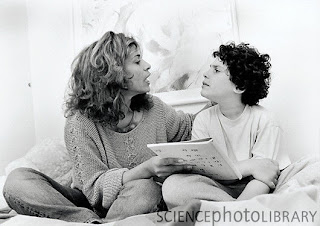I was a bit confused first as I thought it may not be able to portray the real feelings of this group of population, but I am happy that it proved me wrong. As the movie started I was amazed to hear a voice of a mother who was explaining the story of her son Rahil, the emotions and the confusion she stated purely explains the mental status of the parents having children with Autism. As the story of these angels begins and further parents explains about their children, a voice again thrilled me and filled me with some anomic emotions, it was a poem, I don’t know about the poet but that poem is something I must share with you all:
As the story of these angels begins and further parents explains about their children, a voice again thrilled me and filled me with some anomic emotions, it was a poem, I don’t know about the poet but that poem is something I must share with you all:
Masuum ek ankh keh rahi hai kan mai,
Ik jahan aur bhi hai is jahan mai,
Dekha to hai magar use hum jante nahi,
Uski nazar ko theek se pehchante nahi
Hum panchi kehte hai jise wo macchi kehte hai
Ha meethi cheez ho to wo bhi acchi kehte hai
Hum sochte hai jabhi to budhi kho jate hai
Unke khyal shayad pet gudgudate hai
Wo chaand dekhe lagta hai kha jaye tod ker
Suraj chala gaya hai apna anda chood ker
Dilchasp hai wo duniya agar dil lagao to
Wo bhi tumhara hissa unko bulao to
Dono jahaano mai abhi zara si duri hai
Kuch aur pas aao parichaye jaruri hai
Masum ek ankh keh rahi hai kan mai,
Ik jahan aur bhi hai is jahan mai.
These lines were not just lines they were beyond it, and they actually made me think again and again about the social integration of these children, about the gap between them and the society, about the barriers they are facing everyday because of our lack of interest (as a whole society) in their integration. After this thoughtful session the movie touches other sensitive areas of their life. The area which invaded into my thought process was a question asked by a mother of a teenage, about the physical and mental needs of this group at certain age (described by her as "catch 22 situation”). I was actually thinking about this from long time after the movie "My name is Khan”, that they are also having some physical and mental needs (here I am talking about the sexual urges) which should be cater but in our society this area is still to be develop. The other question was a big one asked by the same mother –"what after us?” this wasn’t only her question it’s the question of all those parents living with this population group.
I was actually thinking about this from long time after the movie "My name is Khan”, that they are also having some physical and mental needs (here I am talking about the sexual urges) which should be cater but in our society this area is still to be develop. The other question was a big one asked by the same mother –"what after us?” this wasn’t only her question it’s the question of all those parents living with this population group.
We have to think deeply about the socioeconomic development as well as psychosocial needs of this population to answer these questions. A same kind of approach is shown in the film also. The main part of the film (that is related to the treatment part) was somewhat satisfactory to me; they have opened a window for the parents and people related to the population having autism. And for me all that Occupational therapy approaches and activities described their brought a feeling which cannot be explained in words, but the only thing I feel that there is Occupational Therapy in words and activities but no OT was there to explain the OT domain in Autism. But still one of our Occupational Therapist Ms Bhawana Agarwal, passed out from Santosh Medical College, tried to give the possible answer to the above situation on behalf of all the Occupational therapists which I would I like to mention here as this would be the best way to give a beautiful and thoughtful end to this entry. It goes like this:
Us jahan se is jahan tak hum tumhe layenge,
Is jahan se hum tumhari pehchaan karwayenge.
Panchi aur machhi k antar ko tum pehchanoge,
Bas meethi cheez hi achhi nhi hoti ye bhi janoge.
Nahi kho jaoge fir tum har chhoti baat par,
Tum bhi cheezon ko thik se samajh paoge.
Chand ko khane ka dil phir nahi karega,
Janoge tum kyun jata hai suraj,kya chhod kar.
Hum tumhe bulate hain is duniya me aao,
Is duniya ko bhi tum dilchasp paoge.
Thaam lo hamari ungli aur mitao ye doori,
Kar lo pura vo parichay jo hai zaruri.
Us masuum ankh ko kaho,kahe hamare kaan me,
Wada hai us jahan ko le aayenge is jahan me.
